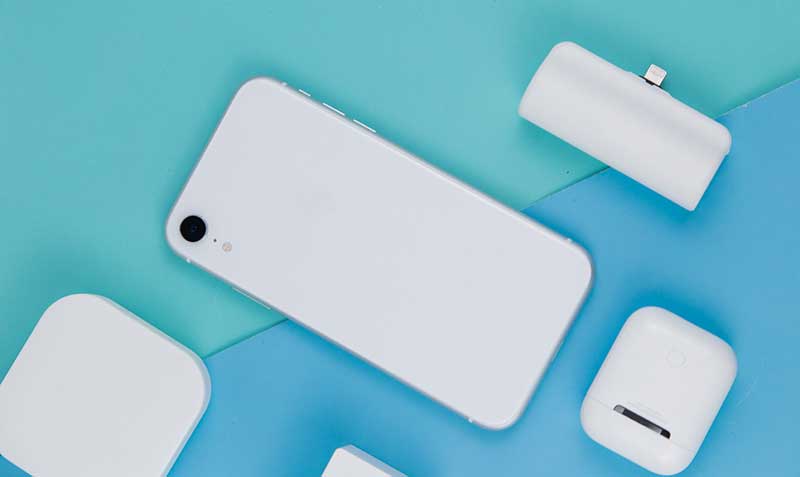China is one of the global hubs for electronics manufacturing, offering a wide range of products at competitive prices. Importing electronics from China is a lucrative venture, as it has a higher profit margin than most other types of products.
However, some people may shy away from electronics imports because of the strict regulations. To learn how to ship electronics successfully, head to this blog post. It will break down the crucial policies, certifications, and transporting rules you should know.
Table Of Contents
- Identify the right electronics suppliers
- Electronics quality certifications
- Electronics compliance testing
- Technology licensing and quality control
- Electronic packaging & labeling requirements
- Necessary electronics import documentation
- Select the best way to ship electronics internationally
- Start shipping electronics from China with Airsupply
Identify the right electronics suppliers
Assess supplier experience
Be sure to consider suppliers already sold to businesses in foreign markets like the USA or EU. It indicates that they will comply with the standards and laws of those countries.
Furthermore, evaluate their responsiveness in customer support and their quality control processes. A supplier’s prompt and supportive customer service can signal their reliability.
Focus on suitability, not the lowest price
While seeking cost-effectiveness is vital, prioritizing quality, consistency, and compliance is equally significant. Opting for the lowest-priced electronics manufacturer may not align with these priorities.
Suppliers to ensure electrical and physical safety regulations, such as using RoHS-compliant components, may have slightly higher product costs. It doesn’t necessarily translate to exorbitant prices; just not the cheapest option available.

Electronics quality certifications
Electronics often require specialized certifications depending on the usage, function, and market they serve. Below lists some regulations you should track when importing electronics from China to USA, EU, and many other countries:
UL (The US)
Underwriters Laboratories test product and certify that it meets stringent safety and performance requirements. When importing electronics, especially those intended for North America, ensuring UL certification is crucial.
The FCC(The US)
It ensures that electronic devices don’t cause harmful interference and comply with EMC standards. Before importing electronics from China to USA, it’s essential to ensure that the products adhere to FCC part 15 regulations.
EMC
Electromagnetic Compatibility regulation ensures that electronic devices can function without causing or experiencing undue interference in their electromagnetic environment.
For example, the European Union has established the EMC directive. All electronic products should pass EMC certification before importing into the EU.
CE (The EU)
The CE marking is a mandatory conformity marking for products sold in the European Economic Area (EEA). It signifies that the product meets the essential requirements of relevant European health, safety, and environmental protection legislation.
RoHS (The EU)
RoHS stands for restriction of hazardous substances directive. It’s an EU regulation that restricts the use of certain hazardous substances in electronic goods.
REACH (The EU)
It is an EU regulation that aims to improve the protection of human health and the environment from the risks posed by chemicals. It requires businesses to register, evaluate, and get authorization for specific chemical usage.
The C/A-tick certification(Australia)
The C-Tick certification, also called the RCM, is a regulatory compliance mark required for certain electronic products sold in Australia and New Zealand.
SAA certification(Australia)
The SAA certification is a safety mark required for electrical products sold in Australia. It demonstrates that products meet the safety standards set by the Australian authorities.
BSI(The UK)
BSI certification is a recognized mark of conformity with British standards for safety and quality. It boosts credibility and trust when importing electronics to UK.
ISO
BSI certification is a recognized mark of conformity with British standards for safety and quality. It boosts credibility and trust when importing electronics to UK.
These certifications not only verify the supplier’s commitment to quality but also expedite customs clearance. And make your products more appealing to potential customers. For more rules for your destination country, you can consult with Airsupply, a reliable freight agent that has prominent sources in international shipping.
Electronics compliance testing
Electronics compliance testing is necessary to ensure product adherence to safety standards and regulations. While not legally mandated, third-party lab testing is often the most reliable method to confirm compliance.
It can help to prevent potential incidents such as your customers’ injury or cause fire due to non-compliant electronics. Generally, the lab testing costs can vary and range exceeding $1,000. Complex products typically incur higher expenses.
Technology licensing and quality control
When importing electronics from China, especially those utilizing Bluetooth or Android OS may require a license fee. These fees can be levied per product (SKU) or per manufactured unit.
For instance, Apple device compatibility products may require additional licensing. This license ensures seamless compatibility but comes with added costs.
In addition, develop a comprehensive quality control checklist before your electronics imports leave China. Since most suppliers may not cover return shipping costs for defective items, a robust quality checklist is your safeguard.
To mitigate risks, consider conducting sample testing, including:
- Basic functionality assessments
- Fatigue tests for buttons and ports
- Component checks
- Charging tests
- Appearance evaluations
- Label verification
- Drop tests
- Water resistance tests
Electronic packaging & labeling requirements
The delicate nature of electronics demands careful handling to prevent damage during transit. Here is what you should do:
- Utilize sturdy materials for packaging that provide cushioning against shocks and vibrations.
- Anti-static materials are also essential to prevent electrostatic discharge damage.
- Custom-fit packaging that prevents movement within the package.
- Consider waterproof packaging or moisture-absorbing materials to protect the electronic device from humidity.
In addition, labels on each package should clearly display the product’s name, model number, and a brief description. Origin information and safety labels, such as voltage details or usage instructions, should also be included. Meanwhile, certain electronics may need regulatory compliance labels, such as WEEE, FCC, CE marking, etc.
If shipping electronics with lithium batteries, you must obey specific packaging regulations for safe transport. For more details, please check our complete guide: What to Know When Shipping Lithium Batteries Internationally.
Partner with Airsupply to guarantee smooth importation. Our warehousing system can help you to inspect, relabel, and improve packaging before shipping to Australia, USA, and other countries. Furthermore, we are proficient in regulations related to dangerous cargo, encompassing packaging, labeling, and safe delivery.
Necessary electronics import documentation
Importing electronics from China involves a series of essential documentation to ensure a smooth customs clearance process and compliance with regulations.
Apart from the commercial invoice and bill of loading, your documents should cover all relevant recipient information, such as address, contact details, and price.
When your electronics imports include lithium batteries, they will fall under the classification of dangerous goods. It requests extra documents like Dangerous Goods Notes (DGN) and MSDS for shipping purposes.
You should pay attention to inadequate or incomplete shipping documents can lead to package returns or hold at the customs authority.
Airsupply can minimize your involvement in paperwork. We will guide you through every step, tailoring the necessary documents to match your cargo shipments.
Select the best way to ship electronics internationally
Generally speaking, you should consider the type and size of your cargo before selecting a shipment method. And then, choose the available options for shipping electronics internationally based on your needs:
Air freight
For time-sensitive shipments, air shipping is the way to go. Airlines tend to have more consistent schedules, ensuring reliable delivery times. But it’s worth noting that air shipping always comes at a premium cost.
Air freight is ideal for smaller shipments and lightweight cargo weighing under 150kg. Moreover, it can be more advantageous if your products are expensive or require express shipping times.
Sea freight
Ocean freight is generally more cost effective for larger quantities or heavy cargo, especially over 500kg. You also can consolidate smaller shipments with others to fill a container. However, sea shipping entails longer delivery times, often taking a month or more to reach your destination.
Railway transport
China’s extensive railway system offers a cost-effective alternative for shipping electronics to Europe and Central Asia. It can be more economical than air freight and competitive with sea freight for specific routes.
Railway shipping is well-suited for bulk shipments and heavy cargo. Additionally, it opens access to international trade routes for landlocked countries through neighboring countries’ ports.
Door-to-door delivery
Opting for door-to-door shipping provides unmatched convenience and reliability. When you purchase a product from a supplier, a reliable freight forwarder manages the whole shipping process.
For example, if you ship electronics from China to USA, we at Airsupply will pick up your goods and clear customs between the two countries. All you have to do is wait for the goods to arrive at your door or warehouse.
Start shipping electronics from China with Airsupply
Each shipping method has its advantages, catering to different needs. Airsupply can customize the optimal solutions by evaluating urgency, budget, cargo size, etc. With over 10+ years of experience, we have navigated various global shipments and can address all problems promptly.
Integrated the following services from Airsupply to import electronics from China hassle-free:
- Overall logistics solutions from air, sea to railways
- Total 6,700 m² warehouse area in China and USA
- Dedicated customs broker partner for each country
- Expert inspection team to check the packages
- Independent department to handle DG cargo
- Instant quote at a competitive price




